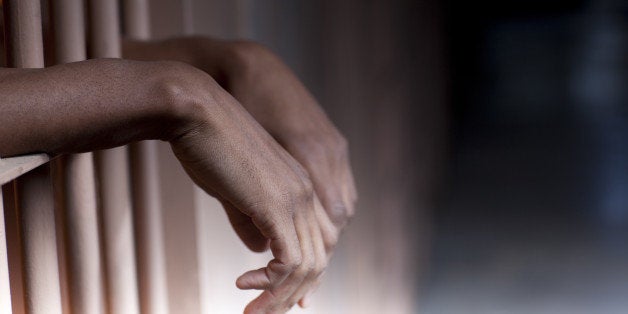
Review of Caught: The Prison State and the Lockdown of American Politics. By Marie Gottschalk. Princeton University Press. 474 pp. $35
In 1994, California mandated that defendants with two or more serious convictions be sentenced to a minimum of twenty-five years to life on conviction of any third felony. Sixteen years later, Jerry Dewayne Williams received this sentence for stealing a pizza from a group of children.
According to Marie Gottschalk, a professor of political science at the University of Pennsylvania, the Williams case epitomizes the dysfunctional and unjust criminal justice system in the United States, which now has 2.2 million individuals behind bars and perhaps 6 million more under some form of government control (on probation, parole, under community sanctions, in drug courts and immigrant detention). In Caught, Gottschalk provides a systematic, surprising, and scathing critique of the prison state. Integral to our social, political and economic life, incarceration policies, she demonstrates, push millions of people to the margins, reducing employment and lifetime wages, impairing mental and physical health, and compromising the vitality and legitimacy of democratic and governing institutions. Caught may well be the best book on this subject to appear in decades.
Caught busts many myths and misconceptions about prisons and prisoners. Construction and operational control of prisons by private companies, Gottschalk indicates, neither save taxpayers money nor serve as an economic boom to local communities. Inmate laborers, who supply the military with helmets, uniforms, and cables for Patriot missiles, she points out, are entitled to virtually none of the health and safety protections accorded to civilians. In 2010 a federal appeals court noted that the Thirteenth Amendment to the Constitution exempted people convicted of crimes from its ban on slavery and involuntary servitude - and ruled that convicts could be paid any wage, or no wage.
Gottschalk also makes clear that most convicted criminals do not cycle in and out of prison or pose a significant threat to public safety. The vast majority of recidivists do not commit new major felonies; they are re-imprisoned for minor crimes or parole violations, like "dirty urine" tests, curfew infractions, or missed appointments with parole officers. Lengthy sentences do not deter crime - and long stays in prison (especially high-security penal facilities) may well increase the risk of recidivism.
Caught also illuminates the role of race in incarceration. Gottschalk reminds us that racial disparities in the prison population remain breathtakingly high. Although she finds little evidence of overt bias and stereotyping in sentencing, she notes that "a little bias" - in charges prosecutors decide to file and the plea bargains they accept - can go a long way. And Gottschalk emphasizes that the war on drugs, which set substantially different penalties for powder cocaine and crack offenses, was by no means color-blind.
Because of the rapid escalation of prosecutions of immigrants, Gottschalk notes, Hispanics now make up 35% of federal prisoners, a larger percentage than any other ethnic group. Since the treatment of immigrant detainees is governed by administrative, not criminal law, defendants are not entitled to access to counsel. With no right to a proceeding in the jurisdiction in which the crime was allegedly committed, they are often transferred to detention centers hundreds or thousands of miles from home. And Gottschalk claims that physical abuse, closed hearings, and arbitrary decisions "have long been the standard operating procedures in this parallel universe."
Gottschalk makes a compelling case that the gap between public perceptions and objective facts about crime and punishment in the United States is a major obstacle to reform of "the carceral state." Americans persist in believing that crime is going up. And, to take one more example, they are fixated on the "stranger danger" of sexual predators, supporting registries of offenders, residency restrictions, GPS monitoring and other restrictions on privacy, freedom of movement, and physical safety, when friends, acquaintances and family members are actually responsible for about 90% of the sexual abuse of children and all sexual abuse.
Wrong-headed public opinion has reinforced the predilection of politicians to "get tough on crime." In this sense, Willie Horton is alive and well in 2014. The three-strikes law (which also doubled the penalty for many individuals convicted of a second felony) remains on the books in California, despite emerging consensus among policy experts that it is ineffective. And Governor Rick Scott of Florida has strongly defended the most restrictive approach to voting rights for felons in the United States.
The paradox of our current approach to prisons and prisoners is that its proponents have sold it as a cost-effective approach to a fundamental and growing problem, when in reality it is an arbitrary, unjust, retributive, and expensive failure. The impoverishment of public debate, Gottschalk concludes, makes it extremely difficult to get traction for significant investments that will reduce unemployment, ameliorate income inequality, and revitalize inner city neighborhoods in ways that will pay substantial dividends over time, and make it possible to dismantle "the carceral state."
